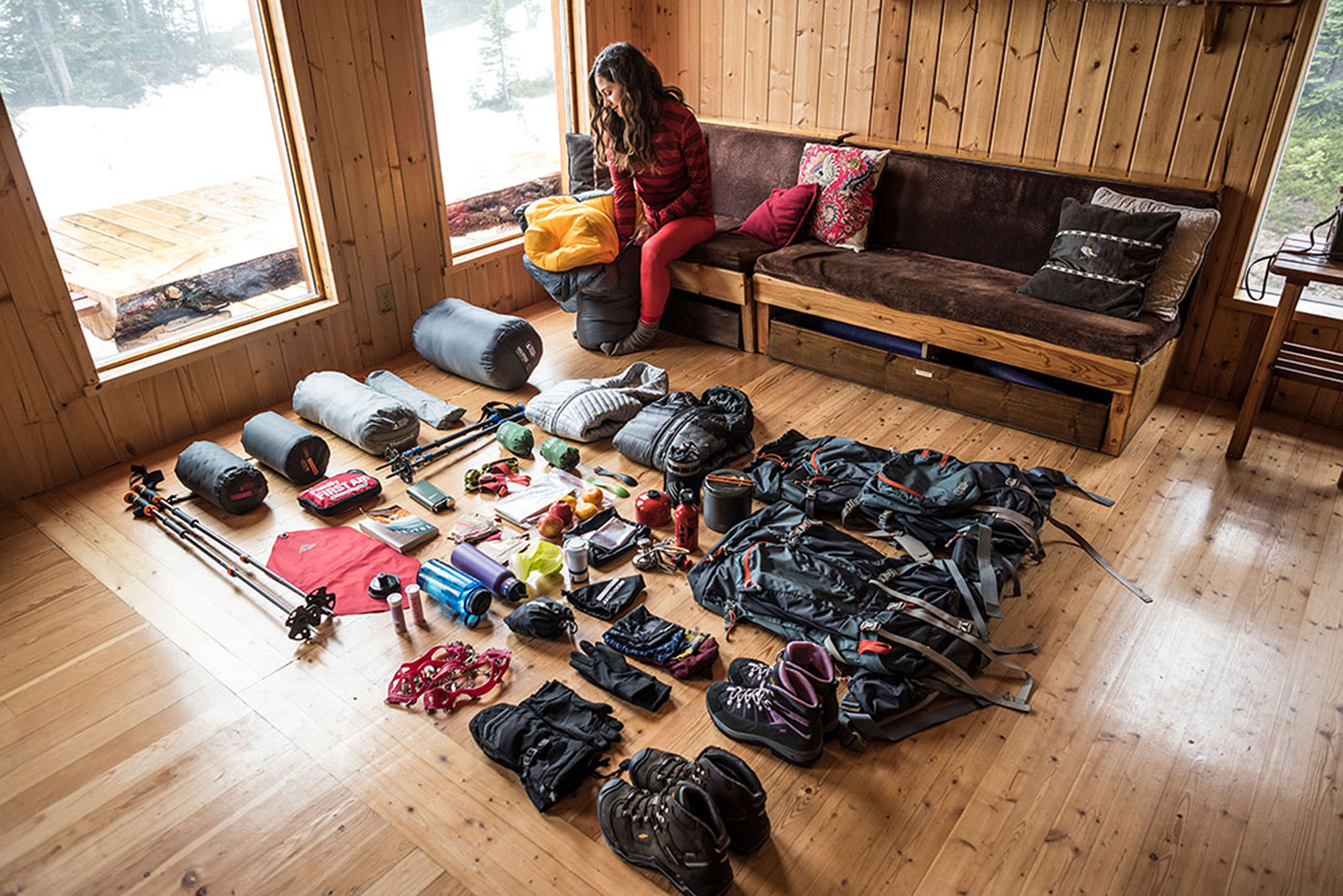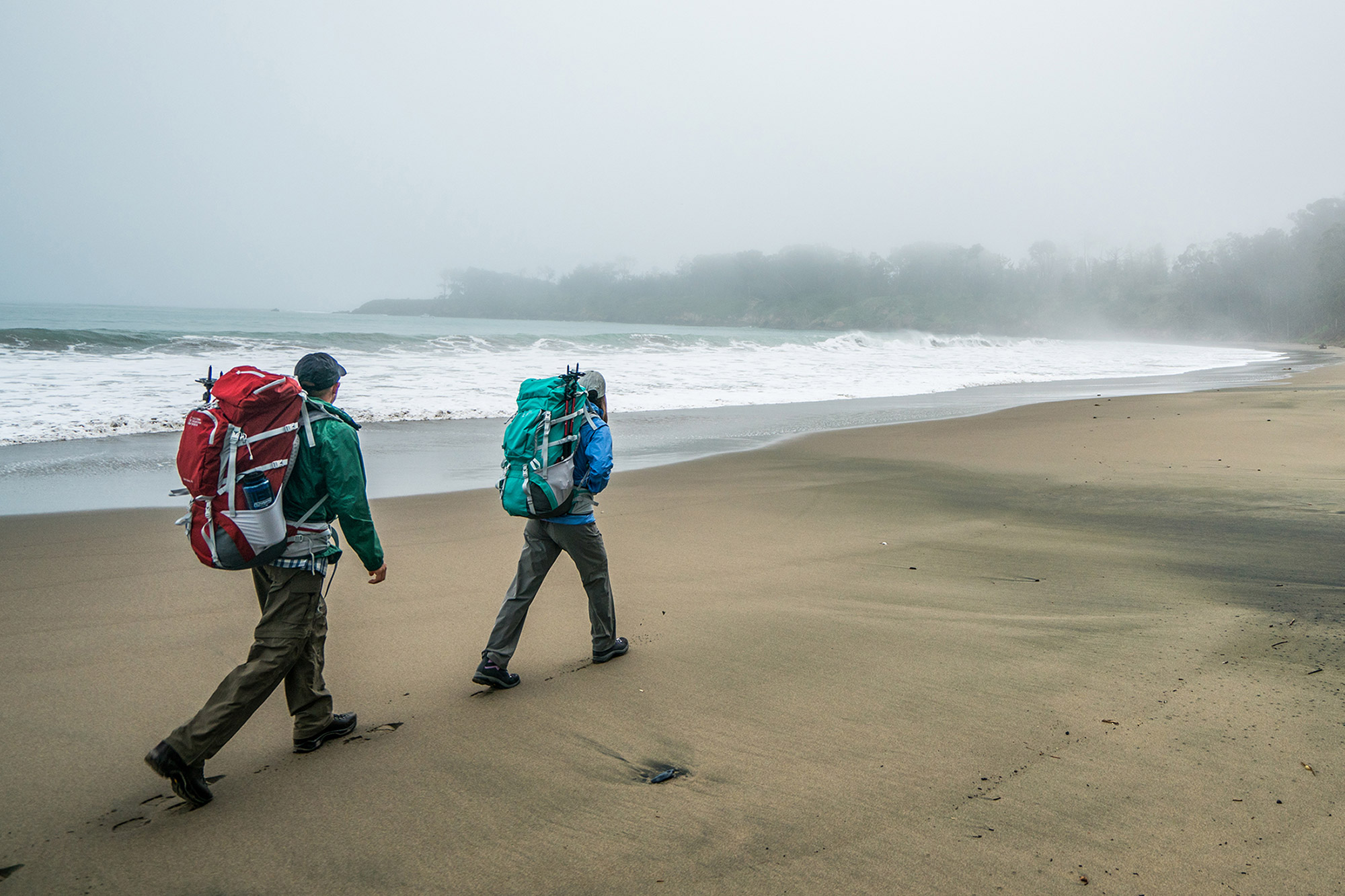You’ve got your route planned and your gear together and now it’s time to pack your bag for your long-awaited overnight trip. Whether you’re heading out for one night, a week, or several months, the way you pack your bag is an often-overlooked part of staying comfortable on the trail. As a general rule, the better you feel while you’re hiking, the more fun you’ll have, and that’s the whole point, right? The good news is there’s a simple way to remember some of the basics of packing your backpack in a comfortable, useful way:

Accessibility
When you put things in your bag, think about when you’ll need them. Sleeping stuff? You won’t need that utill you get to camp, so put that near the bottom. Rain jacket? Probably a good idea to have that puppy near the top so you don’t get soaked digging for it when a storm rolls in a few miles down the trail.
Your navigation tools, like a map and compass, as well as a headlamp, sunscreen, trail food, and your first aid kit are all handy to have in an easy-to-reach spot.
Balance
Ensuring your pack is well balanced is key to a comfortable (and more enjoyable) trip. You want to keep the heaviest items close to the center of your back. Think extra food, tent, and cookset. Pack lighter items, like your sleep system, at the bottom for the heavy items to go on top of. This way, you’re supporting the bulk of the weight with your core and utilizing the suspension of your hip belt most efficiently. You want lighter items on top and near the outside of your bag so you aren’t top heavy or feeling like you’re getting pulled backwards by your pack.
Keep in mind: Water is heavy. If you have one bottle, consider offsetting that with something of equal weight on the other side. If you’re using a hydration bladder think about packing it tight to your back rather than high in your bag.
If you wake up and one side of your body is more sore than the other, that could be an indication that your pack is out of balance.

Compression
One key to a well-packed bag is utilizing all of the available space. Think about the items in your pack as brick and mortar. Hard items like your stove and sleeping bag are bricks. That extra sweater and tent fly are moldable mortar. Don’t let the gaps between bricks go unused. Stuff clothes around larger items to compress them to their smallest form and save space.
Consider compression sacks for high bulk items like sleeping bags. It’s amazing how small a bag can get in a well-cinched compression sack.
Also think about taking your tent out of the stuff sack and using it as mortar to achieve better compression and balance.
Dry
Having your gear get wet is definitely uncomfortable and is potentially a safety issue if you can’t get dry and warm. The best way to mitigate this? Contractor trash bags. They’re the oversized, burly trash bags used to bag yard waste and the like. Found in regular grocery stores, they are perfect, super cheap liners for backpacks!
Line your empty pack with one and pack everything inside. When you’re done packing, take up the extra trash bag material in both hands, give it a few twists and tuck in the twist so it doesn’t come loose. Voilà! The slippery texture makes it easy to stuff items into them, but they’ll never be quite as effective as dedicated pack covers or dry bags.
Equity
If you’re traveling solo, this doesn’t apply to you. If you’re with one or more people, consider breaking up the weight of your packs equitably, rather than equally. Consider size, experience, and strength differences in hiking partners. Larger, stronger, or more experienced hikers can think about taking more weight to balance the load of the group.
If you’re hiking with kids, or introducing someone to backpacking, they’ll have a much better time with a lighter pack.

Fuel
Be careful with how you pack your stove fuel. Pack it below the level of your food, or even better, on the outside of your waterproof line, to ensure if it leaks, you don’t end up contaminating all your gear and food. Use hard-sided fuel bottles and make sure the caps are screwed on real tight before you pack them away. Just in case, fuel bottles make good counterbalances to water bottles on the outside of your pack.
Glossy
Ok, your pack might not actually be glossy, but strive to make the outside of it streamlined and clean. Strapping bulky items like sleeping bags, tents, and pads to the outside of a pack is common. If you can, consider packing everything on the inside. It helps keep your pack balanced, protects your gear, and reduces snags on the trail. A lot of wear and tear occurs with dropping your bag on the ground, and carrying it through rugged environments. Your backpack is designed for that wear, your tent is not.
Pro tip: If you use a foam sleeping pad, pack it first and have it line the inside of your pack cylindrically. Pack everything inside this “tube.” It adds protection to your pad, the gear inside your pack and keeps your bag looking sleek.
Emilia Wint
A former slopestyle skier on the US Freeskiing Team, Emilia recently graduated with a BA in Outdoor Education and Leadership from Westminster College in Salt Lake City. She's lived in a van named Goose for the past 2 and a half years. She tries to call Utah home, but is away climbing, mountain biking, backpacking, and traveling more often than not, so she's still figuring out what 'home' means. When she does find herself in Utah, she works with high schoolers in the foster care system, works as an outdoor educator, reads, writes, tries to paint, and cook delicious food.
Related Posts
April 2, 2024
10 Tips for Mountain Biking Etiquette During Mud Season
One rough spring could ruin the…




